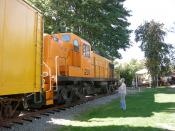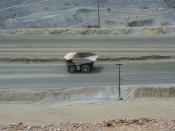In 1968, Kennecott Copper Corporation made a hasty decision when it purchased Peabody Coal Company. In the years preceding the acquisition, Kennecott had experienced wide swings in its profitability, which it was looking to offset by diversification. Investing in another company in a different industry was an intelligent decision; however, Peabody was the wrong company to do this with.
Although Peabody had been profitable and stable over the past few years leading up to the acquisition, the internal rate of return related to the investment was not high enough to justify a purchase of the company. Peabody's cost of debt was .038. This was calculated by assuming a 40% tax rate and .095 rate on debt (Exhibit 3). There was a .095 interest rate on notes payable due June 30, 1998; therefore, we assumed the rate of debt at the time of purchase would have been similar. Also, Peabody's cost of equity was .1397.
This was calculated by using a risk-free rate of .055, which was the rate of the 90-day T-bill in 1968. A beta of 1 was assumed and a .082 market risk premium was used. The latter figure was determined by taking the average returns on the short-term T-Bill rate from 1951-1975. This rate was used because we know Peabody was a short-term investment and the years 1951-1975 give a more accurate reflection of the market return than using the figure from 1926-1987. Furthermore, the weight of debt and equity were .35 and .65 respectively. These figures were used because we are told that approximately 65% of Kennecott's net worth was tied up in Peabody. These figures gave a weighted average cost of capital of 9.70%. The IRR for this purchased was calculated by using $621.5 million as the initial investment. This figure was determined as...



Very Good
Very informative, well-written and generally well thought out.
8 out of 10 people found this comment useful.